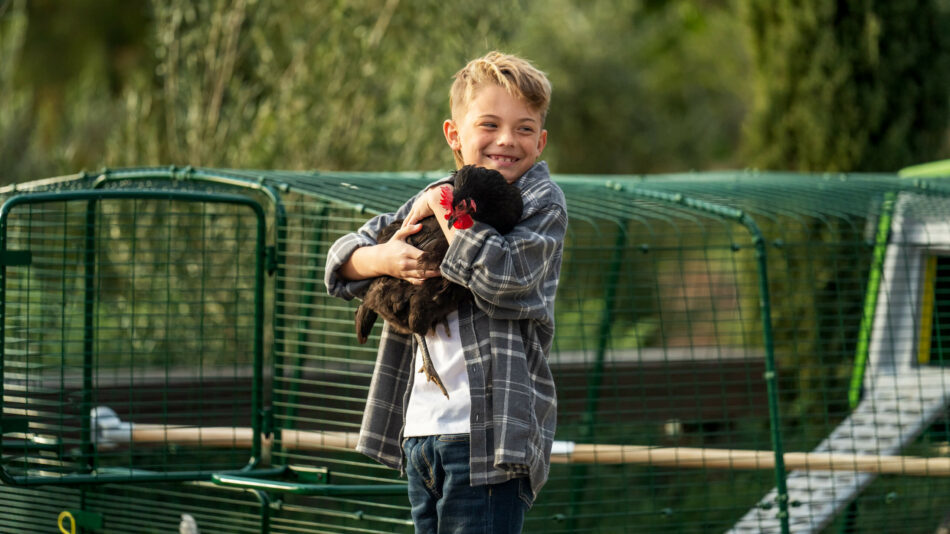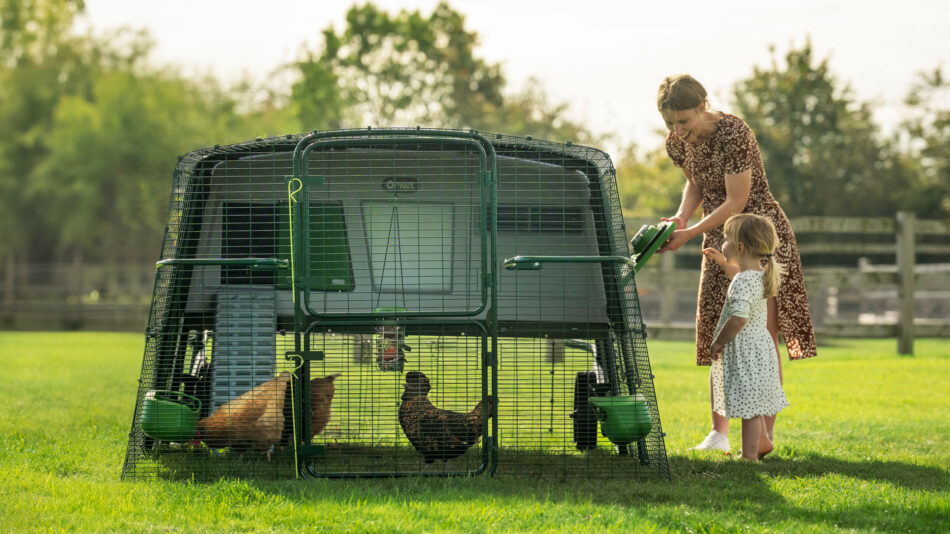Why spring is the perfect time to get chickens
Waiting until winter is over to start a flock? The warmer weather typically fans the flame of future flock-raisers, and understandably so — there are several reasons why spring is the perfect time to get chickens. The longer days and awakening earth make for ideal conditions for hens and chicks alike. Find out how to get started with chickens this spring, and what to expect through the rest of the year.
Table of Contents
When should I buy my chickens?
The term “spring chicken” originated in the 1700s, when farmers realized that chickens hatched in the spring were being bought at a better price than those who had already been through their first winter. Most breeders now begin hatching eggs in December, which has pullets reaching laying age by spring.
Most laying breeds of chickens begin laying eggs between 16-22 weeks of age. If you purchase chickens that were hatched in December, you can expect to start seeing eggs around April. You’ll likely see just a few eggs to start with, but their production will increase as your pullets mature through their first year.
If you start out with chicks in the spring, they should begin laying eggs toward the end of summer. But you also run the risk of chicks being hatched too late in the spring to begin laying before their annual fall moult, which will push egg production into the winter or even the following spring.
How long will spring chickens produce eggs?
Chickens will continue to lay eggs throughout their lives, with their peak production age being around 30 weeks of age. After they’ve turned their first year, hens will begin to slowly produce less eggs over time, decreasing around 10% each year. Most hens will have stopped laying eggs by the time they’re 6 years old, but some breeds or individual hens may continue to lay infrequent eggs for the duration of their lives.
Feeding your chickens a quality diet of layer pellets or crumbles containing at least 16-18% protein will help them in their egg production efforts. Fresh fruits and vegetables, dried insects, and foraging will also help your hens meet their nutritional needs. Make sure your flock always has access to fresh water, and keep crushed oyster shells or another calcium supplement out free-choice in their chicken run to help fortify eggshells.
You can expect your hens to lay fewer eggs, or none at all, during their annual chicken moult. This occurs during late fall, when the daylight hours begin to shorten, triggering the process of chickens shedding their feathers to grow fresh plumage for the winter. Once your hens have donned their winter coats, egg production will resume as usual. The moulting process can take anywhere from 4-12 weeks, but on average you can expect to see fewer eggs for about 6 weeks.
Why is spring the best time for chickens?
Spring has everything that chickens love: mild weather, fresh vegetation, plenty of insects, and longer days to spend foraging. And as a chicken keeper, you get to enjoy these natural buoys to make your workload a little lighter and your days more joyful. There’s nothing like watching your flock scratch the ground while you relax on a calm spring afternoon.
Spring consideration: parasites
The earth isn’t the only thing waking up during the spring — parasites will also be making their comeback. For chickens, the main parasites to be wary of are red mites. Their presence drops off during the colder months, but as the weather warms back up, they’ll be ready for their yearly debut.
Watch your flock closely for signs of a red mite infestation. These include:
- Reluctance to roost, as mites lie in wait for chickens overnight
- Lethargy
- Sensitive skin or feathers, or persistent scratching
- Pale combs or wattles, as this can be a sign of anemia
- Irritation on the skin of the legs
Red mites hide in the crevices of wood, and are very hard to eradicate once they’ve infiltrated a coop. Treating your flock and their coop is tedious, and many treatments have to be administered repeatedly. Preventing red mites is the best line of defense against these opportunistic pests. Eglu plastic chicken coops prevent red mites from hiding, and can be pressure washed easily to eliminate any parasites that may be present.
Chicks in the spring
Spring is a very popular season for chicks. Most farm supply and feed stores stock chicks during the spring, and hatcheries are hard at work hatching higher volumes. This is largely due to the mild weather that spring brings, which makes transitioning chicks from a brooder to their outdoor run easier when the time comes. If you’re looking to raise chicks, starting them in the spring will allow you to move them to their permanent setup during the summer, which will ensure they’re warm enough. Some chicken keepers wait to raise chicks in the fall so that they’re ready to lay the following spring.
Whichever season you choose, you can expect to keep your chicks in a special setup called a brooder for the first 6-12 weeks of their lives. Chicks need a heat source until they are fully feathered, a milestone they usually reach by 6 weeks of age. Chicks younger than 12 weeks should not be expected to navigate a coop on their own, and should stay in their brooder until they are coordinated enough to head to their roost at night. Once they’ve reached 12 weeks of age, you can transition your chicks to their coop.
Prepare for the rest of the year
If you’ve decided to get chickens this spring, it’s a good idea to make a plan for the rest of your chicken-keeping year. Invest in chicken run covers to keep spring showers and summer storms from turning their run into a mud pit, and later to prevent snow and ice from freezing their feet. Outfit their area with some chicken toys and perches for year-round entertainment and enrichment, and install an automatic chicken coop door to simplify your schedule. These accessories are the perfect addition to further simplify spring chicken keeping, and will lend support in every season.
Omlet and your flock
Getting new chickens is exciting — no matter what time of the year it is. Outfit your flock with chicken keeping products that support their behaviors and your lifestyle. When you choose an Eglu Chicken Coop, Walk In Chicken Run and Chicken Run Covers, you’ll equip your flock with everything they need to stay safe and comfortable all year long.
This entry was posted in Chickens



One reply on “Why spring is the perfect time to get chickens”
You don’t say anything about existing hens
may bully any new hens some advice on this may have been a good idea